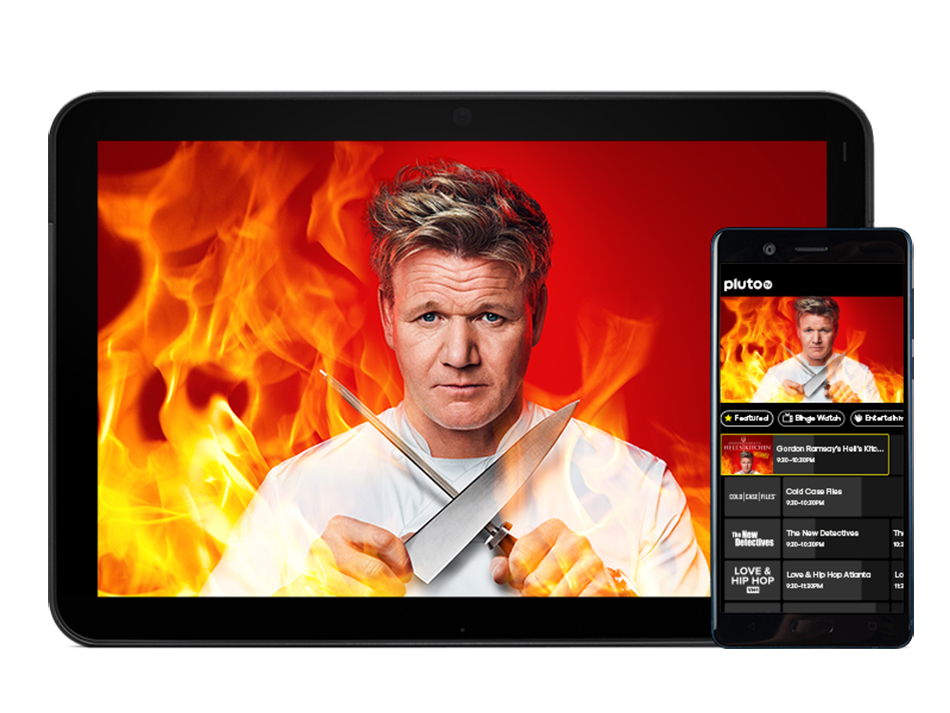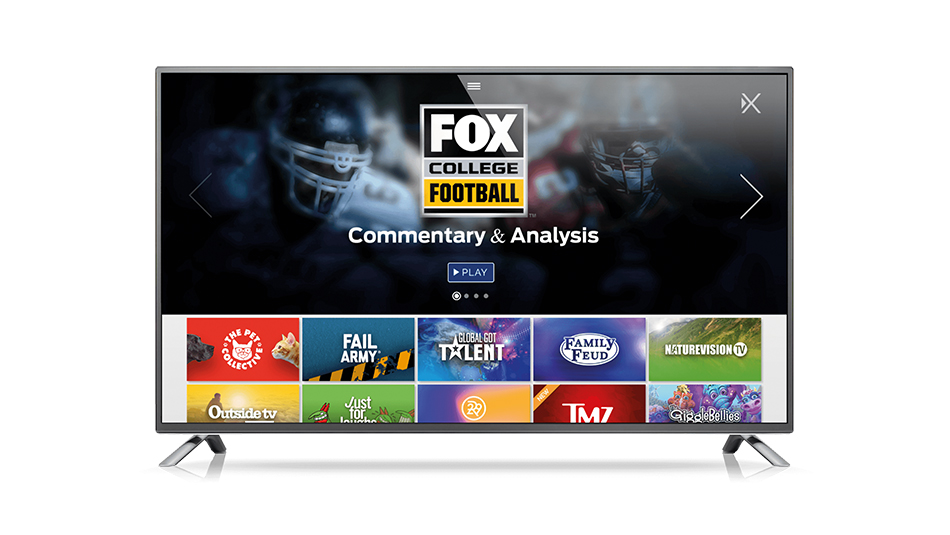AVOD Acquisitions CouldSpur Advanced Advertising
Advanced advertising could accelerate with the acquisitions of the top free streaming video services by larger, traditional media companies.
“Connected television is the undisputed winner of this period,” Tal Chalozin, chief technology officer and co-founder of Innovid, said.
Media buyers are encouraged by the networks getting infused with new technology and innovations. Some tech firms also see opportunity as bigger advertisers grow more comfortable with buying over-the-top and connected TV from familiar faces.
Others, though, warn the industry is still ripe for consolidation and for more middlemen to be eliminated from the tech stack to make advanced advertising work more efficiently.

“I think that what, if anything, is going to squash innovation, it's frankly legacy ad tech,” said Chris Maccaro, CEO of ad tech firm Beachfront Media.
“If you’re a big media company or a big ad tech company and you don’t have a capability right now, you could talk about building it yourself,” Andre Swanston, CEO of OTT audience measurement firm Tru Optik, said. “But by the time you do, you’re irrelevant.”
Spurred by the COVID-19 pandemic, more viewers are going over the top, and the hours spent watching free, ad-supported video-on-demand services and apps have skyrocketed, attracting the attention of advertisers and their media buyers.
The smarter way to stay on top of the multichannel video marketplace. Sign up below.
RELATED: Gambelli Says Tubi Rounds Out Fox’s Media Assets
Big media companies, which are losing viewers and subscribers, have noticed, too. In March, Fox bought ad-supported VOD programmer Tubi for $440 million and Comcast bought AVOD firms Xumo and Vudu for undisclosed amounts. Those deals came after Viacom last year bought Pluto TV, another AVOD programmer, for $340 million.
Pluto has technology that can help ViacomCBS compete in a streaming future. “Pluto has done an incredible job programmatically,” David Lawenda, executive VP for sales, digital video and interactive at ViacomCBS, said. “They’ve done a terrific job of monetizing that way. Both sides have leveraged each other’s strengths to make the overall offering stronger.”
Will ViacomCBS bring Pluto’s tech in-house and stop working with other platforms? “We haven’t made that call yet,” Lawenda said. “I don’t think the middlemen are going away. The larger ad-tech players will adapt their stacks for connected TV, either by acquisition or by listening to the market and building what’s needed. It’s just going to take a little time.”
Similarly, Tubi’s ad sales team will report into Fox ad sales and be a part of upfront deals. But Tubi will continue to sell inventory on other platforms. “You can’t isolate a market or try to control it,” Fox president of ad sales Marianne Gambelli said.
Consolidation a Boon to Buyers
Buyers think their clients will benefit as consolidation cleans up some of the industry’s fragmentation and media firms get a technology injection from the streamers they acquire.
Dealing with established media partners, rather than digital upstarts, helps. “The more we can get closer to the content owners and the inventory owners, the better,” Jessica Brown, director, digital investment at GroupM, said.
Big media companies may start to cut out some of the middlemen in the digital video advertising sales and serving business. “The more in-between players, the more room there is for fraud or piracy, all the things we don’t want,” Brown said.
Consolidation also raises the chances that industry-wide challenges, including accurate audience measurement, will get solved quickly. The upstarts are more automated and their platforms were built for advanced advertising.
Acquiring these upstarts gives the legacy media companies not only a bigger footprint in the CTV space, “but also the innovation, the access to the people who built that stuff the engineers write the product people because they know that that's where the growth is going to go,” Matt Kramer, managing director of advanced advertising at Omnicom Media Group, said.
While AVOD offers advertisers opportunities to use data and address individual viewers, Kramer said those capabilities still need to be operationalized. “It's not an area that is easy to plan against to optimize and to measure.”
When Tubi and Pluto were on their own, “they were probably more willing to do more for us so that they could get our ad dollars,” Kramer said.
Ownership changes should spur more demand for connected-TV advertising. That means that even though many media companies are building their own proprietary tech stacks and data capabilities — Comcast owns FreeWheel, AT&T owns Xandr, Verizon has Verizon Media — there should be more money for everyone in the advanced advertising ecosystem, Kramer said.
“Those who control the pipes and the data are the ones who win, right?” Kramer said. “And so I know that the big media companies understand that, [and so] I’m sure we’re going to continue to see investment in that area.”
Mike Laband, senior VP of platform at SpotX, sees all of the mergers and acquisitions in the advanced advertising space as an opportunity. “As advertisers go after this inventory via programmatic channels, I do believe that [supply side platformns] and [demand side platforms] will continue to grow,” he said.
SpotX’s platform provides the digital pipes that help deliver the ads to the right places and upgrades them as market needs change.

“That's going to be a heavy, heavy load to take on, to control that and be able to own that completely,” Laband said. “So, I think, why own it when you can rent it?”
Some capabilities will move in-house. “That could happen down the road,” Laband said. “It’s not something that we’re seeing specifically today, though.”
Some tech companies think the industry will have to move faster and legacy technology is holding it back.
“We live in a world of amazing technology, but for some reason the TV industry can’t figure out how not to show the same ad twice in a row,” Adam Helfgott, CEO of programmatic ad firm Madhive, said. “It’s not a technology problem. It’s a legacy technology problem.
“COVID has even traditional players now rethinking how they transact in media,” Helfgott added. “The upfronts are changing. You’re going to see more revenue moving to spot [sales] at least over the next year. You have a lot of people looking at the cost. They have to support the manual sales process.
“Who loses are people that are remarketing decade-old technology with new product names on top of infrastructure that’s 15 years old,” Helfgott said. “There is a lot of underlying architecture that just doesn’t allow the features buyers are going to require as they get more and more sophisticated.”
Added Beachfront’s Maccaro: “As you look at what’s going to squash innovation, legacy ad tech is the biggest barrier right now.”
SpotX’s arrangement with publishers sometimes gives that company’s bids a priority status, Maccaro said, resulting in higher bids not getting considered.
Beachfront recently introduced a pod-bidding system that Maccaro said puts all bidders on a more equal footing. “We’ve run into a half a dozen publishers right now that have said, ‘Listen, SpotX is our biggest SSP. We love your solution but SpotX is telling us they can’t integrate with a third-party pod-bidding solution.’ ”
Maccaro said the pod-bidding system is open source based on pre-bid specs and that SpotX is a board member of the Pre-bid.org organization. “And they’re telling publishers they can’t integrate with our podding solution because it’s a technical problem. What they’re doing is they’re protecting this legacy waterfall.”
Responding to Maccaro, SpotX’s Laband said: “We’ve found that some existing technology layers do not scale well in high-concurrency OTT environments and they add latency. A direct integration with the media owner’s SSAI solution or ad server is a preferred path for SpotX, due to the elimination of multiple tech layers in between the source of the inventory and the end buyer.
“SpotX is focused on bringing premium, broadcast-ready solutions to market for our customers,” Laband added. “Additionally, SpotX maintains its commitment to inventory quality assurance to our buyers and premium OTT media owners, which means we enforce very strict brand safety and security requirements on what platforms can interact with our technology.”
Solving Bidding Issues
Travis Hockersmith, VP of platform services at smart-TV maker Vizio, said that most of the issues in making the bidding process fair and assuring revenue optimization can be solved.
“If everyone has full transparency into where the ad calls are going and into the ad decisioning on how to fill pods, I’d say 90% of the disputes that I’m aware of in the space would disappear,” Hockersmith said.
“Right now, there are so many ad-tech black boxes and there's a financial incentive for those black boxes to exist because if you can control the data and the other side can't see the data, you stand to win financially,” Hockersmith said. “All of the disputes start from a position of mistrust. So, I think 100% transparency solves 90% of the problems.”
As the market develops there will be winners and losers.
“It’s the ones that conduct their business in a transparent way” that will be the winners, said OMG’s Kramer. “They have the audiences that we’re looking for. They have the quality of the media that we’re looking for and they’re just going to be good partners to us and our clients. The business remains the same, you know, having a firm handshake, an ethical and responsible relationship and serving great ads in great media. The strong players will remain the same as long as they follow those guidelines.”
Jon has been business editor of Broadcasting+Cable since 2010. He focuses on revenue-generating activities, including advertising and distribution, as well as executive intrigue and merger and acquisition activity. Just about any story is fair game, if a dollar sign can make its way into the article. Before B+C, Jon covered the industry for TVWeek, Cable World, Electronic Media, Advertising Age and The New York Post. A native New Yorker, Jon is hiding in plain sight in the suburbs of Chicago.

